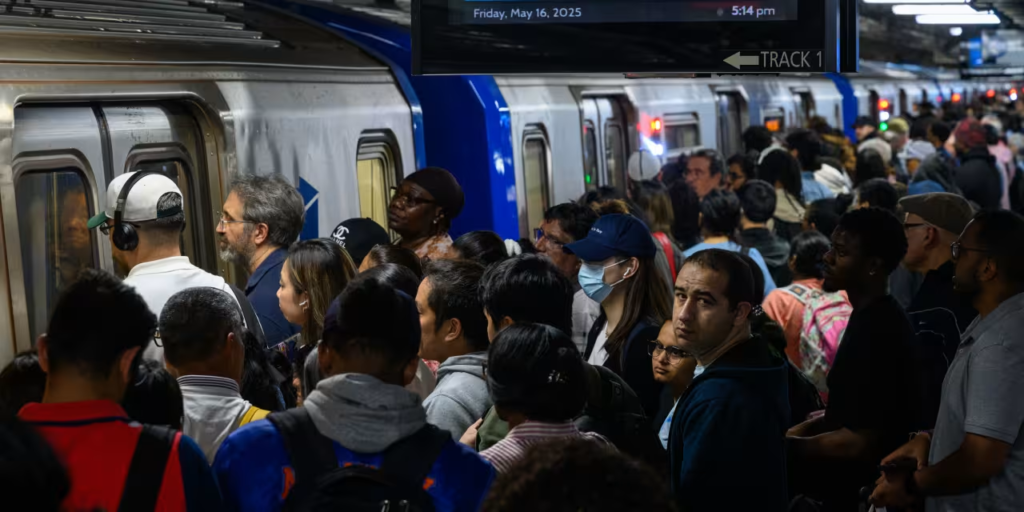After days of disruption and public frustration, the NJ Transit strike has officially come to an end. A top union official confirmed late Wednesday that a deal has been reached between transit workers and NJ Transit, ensuring that full rail and bus services will resume soon. The announcement came after intense negotiations that lasted several days, significantly impacting daily commuters across New Jersey.
This resolution brings much-needed relief to thousands of passengers who depend on NJ Transit for their daily travel, particularly those commuting to and from New York City. The strike had caused major delays, cancellations, and even forced many businesses to adapt to a sudden drop in foot traffic.
For background on NJ Transit and updates on service restoration, visit NJ Transit’s official website.
Why the NJ Transit Strike Happened
The strike involved more than 1,500 union members representing conductors, engineers, and maintenance staff. Workers were demanding wage increases, job security, and improved healthcare benefits. Negotiations had been ongoing for over six months, but tensions escalated over the weekend when talks broke down without agreement.

The Brotherhood of Locomotive Engineers and Trainmen (BLET), one of the lead unions involved, released a statement explaining that the strike was a “last resort.” They claimed NJ Transit had failed to present a fair proposal, leaving them no choice but to walk off the job.
More details on the union’s demands can be found here.
Strike’s Impact on Daily Life
From Monday to Wednesday, New Jersey residents experienced massive transportation disruptions. Major transit hubs like Newark Penn Station, Trenton, and Secaucus Junction were nearly deserted. Thousands were stranded or forced to find alternative transportation options, including rideshares, carpools, and remote work setups.
Many office workers in New York City had to reschedule or cancel meetings. Schoolchildren and elderly residents who depend on NJ Transit also faced difficulties, prompting some municipalities to arrange emergency shuttle services.
Businesses across the state, especially near train stations, reported significant losses. Small cafés and convenience stores said they saw customer numbers drop by over 50%.
What’s in the Agreement?
According to union spokesperson Daniel Rivera, the agreement includes several major improvements for workers:
- A multi-year wage increase starting this year
- Expanded healthcare benefits with lower employee contributions
- Job security clauses to protect against layoffs
- Safety and training improvements to reduce on-the-job injuries
Rivera called the deal “a step forward in recognizing the value and dignity of our workers.” The official contract will be signed and released later this week.
To learn more about transportation worker protections, visit U.S. Department of Labor’s union page.
Governor Phil Murphy Responds
Governor Phil Murphy welcomed the news and praised both sides for reaching a resolution without extending the strike. In a statement, he said, “This is a win for the people of New Jersey. I applaud NJ Transit and the union leaders for finding common ground.”
Sources close to the matter revealed that the Governor’s office was involved in behind-the-scenes discussions, encouraging both sides to return to the table.
When Will Services Resume?
NJ Transit officials said that it may take up to 48 hours to restore full train and bus services. Operations teams are now working to reschedule crews, inspect trains, and update stations for passenger readiness.

Jennifer Hsu, NJ Transit’s press officer, stated, “We’re moving quickly to return to normal. We understand the disruption this caused and thank our riders for their patience.”
Riders can stay updated on schedules and changes at NJ Transit’s Service Alerts page.
Economic Cost of the Strike
According to early estimates from the New Jersey Chamber of Commerce, the strike may have cost the state more than $60 million in lost productivity, sales, and delays. The business community has called for increased investment in emergency planning for public transportation and stronger contract enforcement to prevent similar disruptions in the future.
Restaurant owners, retail shopkeepers, and delivery companies were particularly hard-hit. “This was a tough week. We rely heavily on commuter traffic,” said Tania Gomez, who owns a deli near Newark Penn Station.
Public Reaction to the Strike Ending
On social media and in community forums, New Jersey residents expressed a mix of relief and lingering frustration. While many celebrated the end of the strike, others demanded better long-term planning and faster communication during crises.
Commuter Paul Singh tweeted, “Glad the strike is over, but NJ Transit needs to be better prepared. We shouldn’t have to scramble like this again.”
Transit advocacy groups are now calling for better rider protections, including emergency shuttle systems and clearer refund policies for affected passengers.
Lessons Learned from the Strike
Experts say the strike highlights the fragility of the public transportation system and the importance of fair labor practices. Dr. Lisa Thompson, a public policy professor at Rutgers University, commented, “What we’ve seen here is a breakdown in dialogue that hurt everyone. The focus now should be on creating systems that prevent this level of disruption in the future.”
Moving forward, NJ Transit is expected to review its labor policies and communication strategies. This may also encourage lawmakers to push for a more permanent transportation emergency response plan.
Final Thoughts
The end of the NJ Transit strike is good news for New Jersey, but it also reveals deep cracks in the system. Reliable transportation is vital for economic stability, education, and quality of life. While this crisis is over, the conversation about public transit funding, labor rights, and commuter support must continue.
With the union agreement reached, NJ Transit now has the chance to rebuild rider confidence and prove that lessons have been learned.
For more updates on the NJ Transit situation, follow NJ.com’s Transit News.
Also Read – Market Volatility Drives Readers to New York Times Updates






